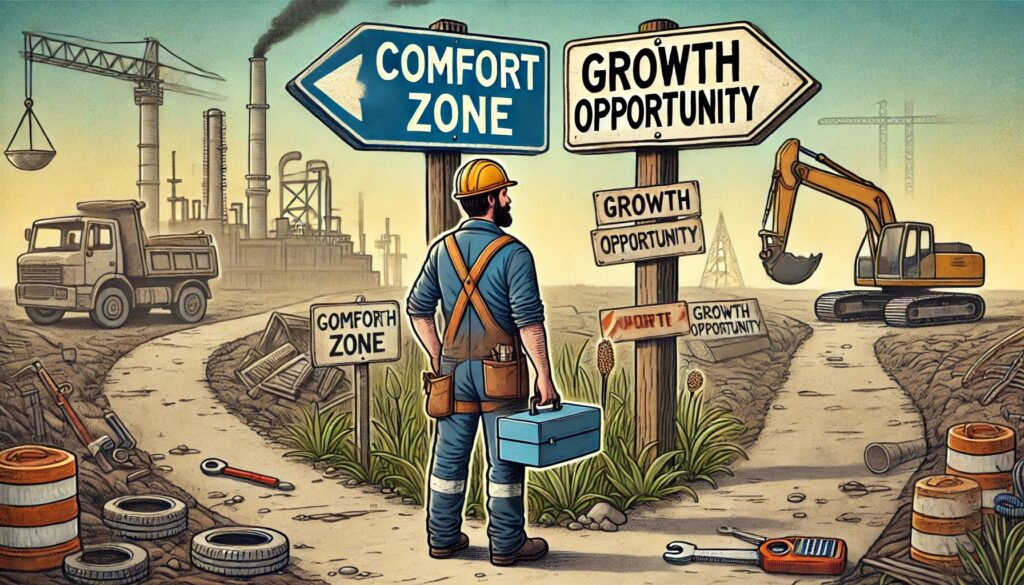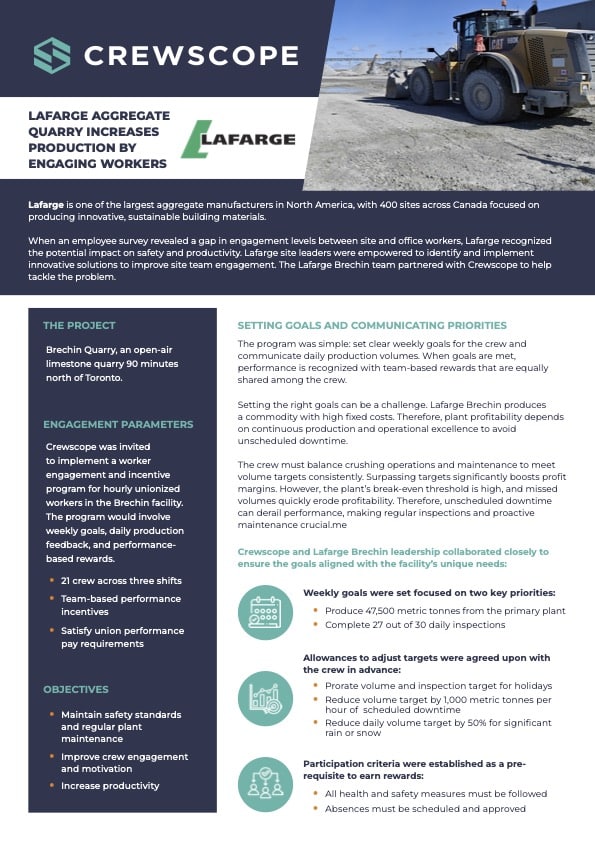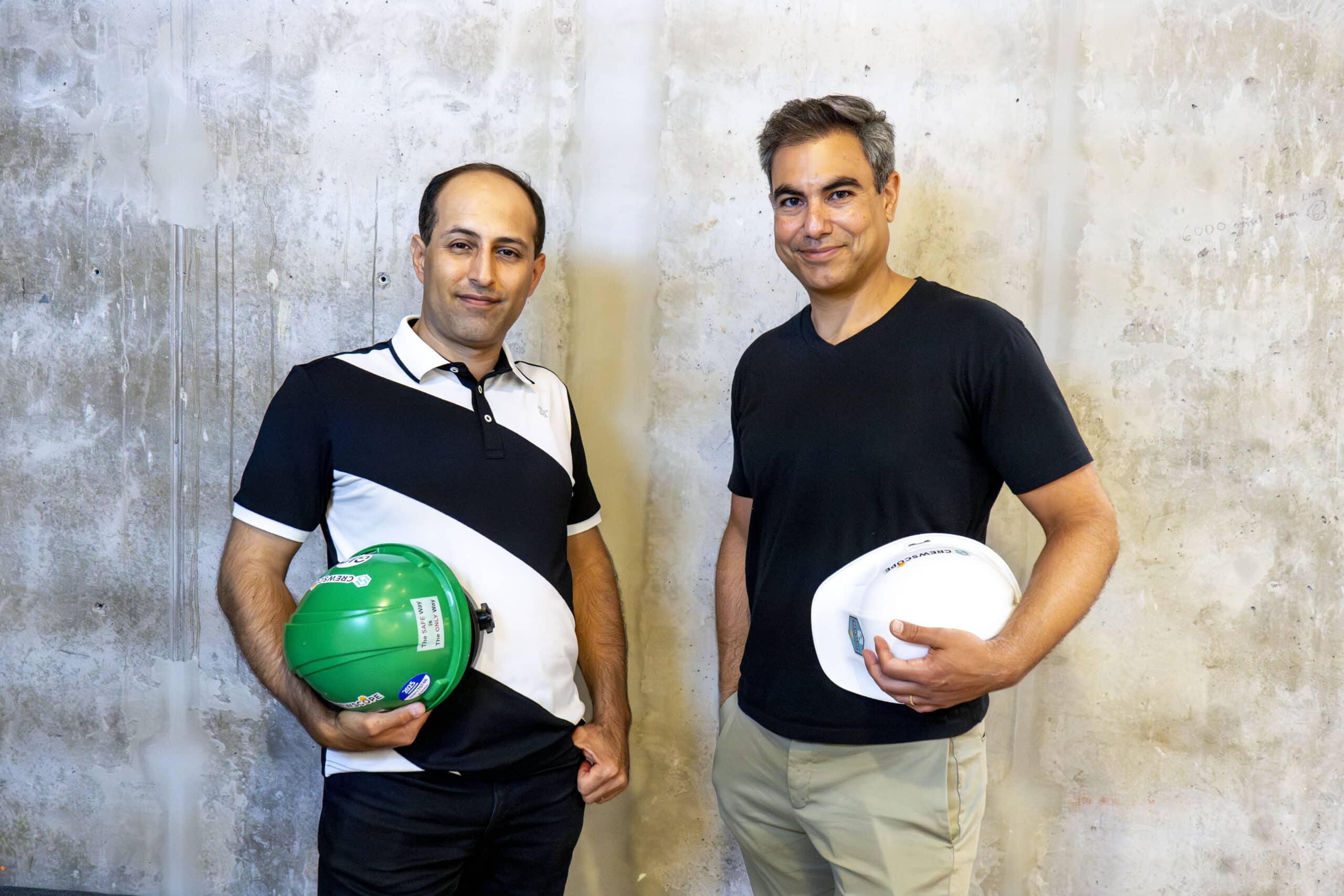In Crewscope, we help construction Crews implement goal settings, and we introduce performance-based incentives. When the crew meets their goal, they earn rewards. These rewards aren’t very large and don’t replace their base salary. (it amounts to less than 2% of their base pay). However, it creates a gamification effect that grabs the attention of workers and motivates them. It essentially helps them put a higher value on their own labor hours and encourages them to be prudent with their time onsite. One feedback we have heard is interesting:
When things go well, it helps. When things don’t go well, it makes problems worse. People get upset because they aren’t getting their reward. Adds more wrenches in the mix when targets are not hit.”

The feedback we have received highlights a common challenge with performance-based systems: If not done right, they can potentially demoralize teams when goals aren’t met. This is actually good because it suggests that the teams are engaged and they care and pay attention. It suggests that they are pushing themselves which is a whole level of maturity higher than typically where we start.
Having said that, we still need to help them learn how to fail. The same way that learning how to fall gracefully and how to get back up is essential when you start learning to ski.
To address this issue and help crews learn to “fail well,” we incorporate principles from Agile methodologies and other frameworks that emphasize learning from failure. Here are some strategies:
1. Normalize failure as part of the learning process:
Encourage a growth mindset where challenges are seen as opportunities to learn and improve.
Celebrate efforts and progress, not just outcomes.
2. Implement regular retrospectives:
After each project or sprint, hold a meeting to discuss what went well, what didn’t, and how to improve.
Focus on systemic issues rather than individual blame. We sometimes call these “Blameless Retro”.
3. Use failure as a diagnostic tool:
When goals aren’t met, treat them as valuable data about processes, estimates, or unforeseen challenges.
Encourage crews to analyze the root causes of missed targets. This includes learning how to set better targets, which is a critical part of the job now.
4. Adjust goals dynamically:
Allow for goal adjustment if external factors make the original goal unrealistic.
Consider using relative goals (an improvement over the last performance) rather than absolute targets.
5. Implement a “fail-safe” environment:
Ensure fails are temporary and transient. Every new cycle is an opportunity to start fresh and don’t let the past fails make it more difficult to succeed in the future attempts. Create opportunities for crews to experiment with new methods in low-risk situations.
6. Recognize effort and problem-solving:
Reward not just achievement of goals but also innovative problem-solving and effort in difficult circumstances.
7. Provide support, knowledge-sharing, and resources:
Ensure crews have the necessary tools, training, and support to achieve their goals. Create platforms for crews to share lessons learned from both successes and failures.
References and further reading:
- “Fail Fast, Fail Often: How Losing Can Help You Win” by Ryan Babineaux and John Krumboltz – Explores the benefits of embracing failure as a learning opportunity.
- “Psychological Safety and Learning Behavior in Work Teams” by Amy Edmondson (Administrative Science Quarterly, 1999) – Seminal work on the importance of psychological safety in team learning.
- Agile Alliance’s “Fail Fast” article: https://www.agile-academy.com/en/agile-dictionary/fail-fast/ – Provides an overview of the “fail fast” concept in Agile methodologies.
- Harvard Business Review article “Strategies for Learning from Failure” by Amy C. Edmondson: https://hbr.org/2011/04/strategies-for-learning-from-failure
Frequently Asked Questions
- How can you tell if workers care about their performance?
When workers miss a target and feel disappointed, it shows they are invested in their work and want to achieve their goals. Their reaction reflects their care about their performance and the team’s success. - What is a growth mindset?
A growth mindset involves viewing challenges as opportunities to learn and improve instead of perceiving them as setbacks. It is a medium where one can develop skills to grow more. - What are retrospectives, and why are they helpful?
Retrospectives are meetings where the team reviews what went well, what didn’t, and how to improve. They help fix processes without blaming individuals. - What steps can be taken to address the team’s failure?
Provide training and tools in a safe environment for experimentation, allowing people to learn from mistakes and try again for positive outcomes.


